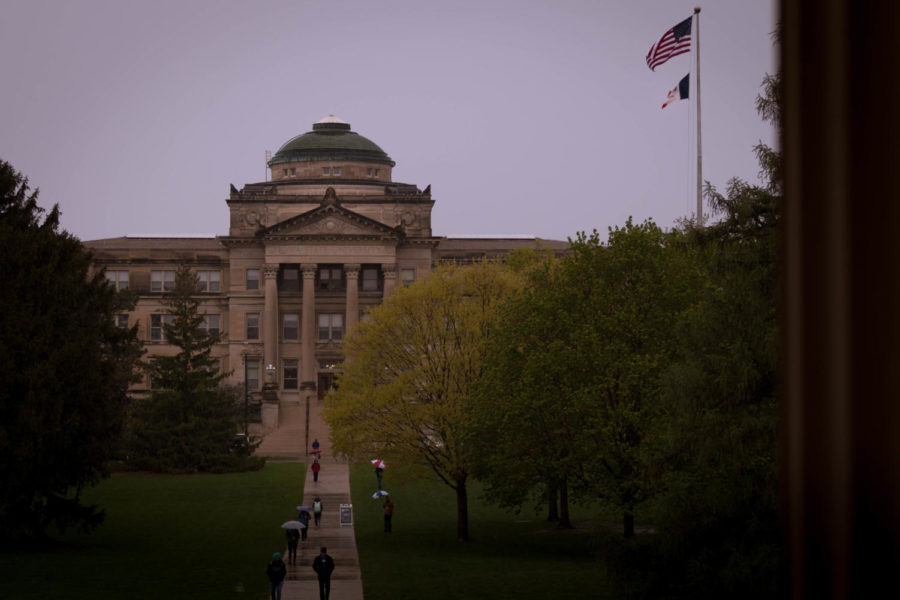Letter: How to fix the student debt bubble
Alec Giljohann/Iowa State Daily
Beardshear Hall, hosts a variety of free resources for all 36,660 enrolled students at Iowa State.
February 18, 2019
Student loan debt is one of the largest problems that faces our generation today. With over $1.5 trillion in student loans, students are forced to make massive personal and financial sacrifices to simply make each payment. Our society has accepted this as normal but 30 years ago our parent’s generation did not have these same issues.
Since 1988, the average college tuition has risen over 200 percent when adjusting for inflation. That means that we are paying over three times what the previous generation did for higher education. Additionally, over 10 percent of student default on their loans each year because of the increasing prices.
Has the quality of our education become three times as valuable over that 30-year time period or has the increase in tuition been a result of reckless, uncontrolled spending? As you may have assumed, my standpoint is that this problem is a result of decades of reckless spending by public universities.
The first part of my issue would be the salaries of the administration and faculty. I am in favor of paying fair salaries to faculty who deserve it and bring value to the university but there should be limitations, especially for public universities. President Wintersteen’s annual base salary will be almost $600,000 after three years at the university.
Additionally, she will receive close to half a million in deferred compensation over a five-year period while also having a home and car provided for her. She has constantly complained about Iowa State’s budget being cut by the Board of Regents but has yet to provide any long-lasting solution except for raising tuition. She could donate a portion of her large salary back for scholarships since she is so “concerned” but has yet to do anything like that. Other faculty (specifically deans and tenured professors) across the university are paid well above $200,000 and $300,000+ a year.
We must ask ourselves whether these faculty members are providing enough value to warrant receiving such large salaries. Could others come in and do the same or better job for a fraction of the salary? My opinion is that they most likely could. Some of my best teachers at Iowa State were individuals who had a bachelor’s or master’s degree and not doctorates.
My next issue is with the unnecessary spending on programs and buildings. Again, I believe there needs to be spending for crucial student programs and buildings across campus. However, the university is spending money on pointless things just to use their current budget and not have any unused money taken away from them. I was told this by an advisor in the business career services office who said that they were giving away free tumblers and other items “because if we didn’t spend our budget that money would get taken away from us next year.”
While that may not seem that impactful, that was just one small department in an extremely large college where small costs can add up to extremely large expenses in the long run. Proposed renovations to buildings like the library are completely unnecessary too. The library is a great resource to thousands of students each day but I would argue that a vast majority of them have not been complaining about the building needing to be redone particularly when others buildings are in much greater need of updates.
Another point of concern for me is redundant programs such as the Office for Diversity and Inclusion, the Multicultural center and the Margaret Sloss Center for Women and Gender Equity. I am a firm believer that there needs to be resources for all students across the campus but to have them operate separate from student services seems like such a waste of money, especially with some having fairly large staffs. After all, many of these programs cross over with one another and provide very similar services so wouldn’t it make sense to incorporate them into student services and not waste resources? Students should have the opportunity to spend time with peers that have similar interests, backgrounds, and lives but the university should not be funding entire programs (and hundreds of thousands of dollars in salaries) for what are essentially clubs.
My last concern is with the athletic program spending. I am an avid sports fan but the spending for our athletic programs is out of hand. For years, the university supported the athletic programs prior to multimillion-dollar NCAA TV deals and subsidized their expenses with money they received from tuition, state funds, etc. Now that the program has a surplus of funds, that excess money does not go back to the university but rather gets spent on unnecessary gear for athletes (many of whom are already on full scholarships), different uniforms for almost every single football game, and multimillion-dollar athletic facilities among many other things. We have a society that idolizes these programs at the expense of the students.
When adding up my top three issues, one can see that millions of dollars is being wasted that could (and should) be used to bring down your tuition and not put students in crippling student loan debt. The ROI (return on investment) of college is quickly diminishing and racking up tens of thousands in student loan debt is harming their futures. This issue did not happen overnight and it certainly won’t be fixed overnight. As a society, we need to address the spending of public universities and get it under control before even more lives are ruined because of this student loan crisis.







